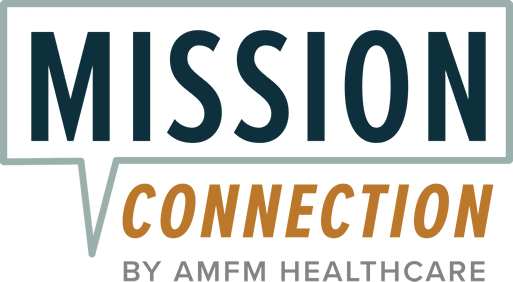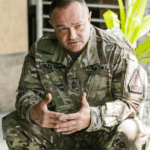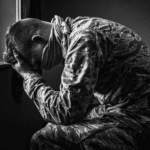Top Evidence-Based Therapies for Veterans

If you’re a veteran struggling with painful memories, depression, or anxiety, or you’re feeling like things haven’t been the same since your service, we want you to know: You’re not without options.
Over the years, mental health researchers, working closely with veterans just like you, have identified therapies that actually work. These are called evidence-based therapies, and they have been tested, studied, and refined with your struggles in mind.
On this page, you’ll learn about the different types of evidence-based therapy for veterans.

What Is Evidence-Based Therapy for Veterans?
For veterans, coming back from military service is not like just “getting back to normal.” You’ve been in situations that civilians can’t begin to imagine: Combat, high-stress decision-making, grief, loss, hyper-vigilance, and moral injury.
Evidence-based therapies are built to target exactly what you struggle with, like post-traumatic stress disorder (PTSD), depression, anxiety, survivor’s guilt, anger, insomnia, relationship breakdowns, and more.
They recognize that veterans need real, structured support that understands the weight they’re carrying and gives them ways to set it down.
Evidence-Based Therapy Options for Military Veterans
Over the years, hundreds of different therapeutic approaches have been tested with veterans. Through all that research and real-world application, some VA therapies for mental health – by this, we mean treatments offered by the Department of Veterans Affairs, a U.S. federal agency that’s responsible for the welfare of veterans and their families – have consistently stood out for their effectiveness.
Let’s look at the top evidence-based therapies that have shown consistent benefit for veterans.
Trauma-Focused Therapy for Veterans
Cognitive Behavioral Therapy
Cognitive behavioral therapy (CBT) for veterans is often called the “gold standard” of therapy. At its core, CBT helps you understand how your thoughts affect your emotions and behaviors.
When you’ve experienced trauma, your brain gets stuck in patterns that no longer serve you. Examples include:
Thinking the world isn’t safe- Believing that you’re to blame
- Thinking that there’s no point in trusting anyone
In addition, CBT isn’t a single rigid approach. It includes specialized subtypes that target specific issues. For example, CBT for depression (CBT-D) tackles hopelessness and lack of motivation. CBT for insomnia (CBT-I) treats long-term sleep problems without relying on medication.
Brief cognitive behavioral therapy (brief CBT) for depression has been successfully implemented across more than 40 VA facilities. Research reports that so far, over 2,100 CBT sessions have been delivered to veterans, resulting in a 4.6-point improvement in symptoms.2
Prolonged Exposure Therapy
Prolonged exposure therapy (PET) is one of the most effective, and yes, most challenging, trauma therapies. It helps veterans stop running from the memories that haunt them.
Avoidance is a natural reaction to trauma. You don’t want to think about it, talk about it, or even go near anything that reminds you of it. But over time, avoidance just makes the fear stronger and the world feel smaller. In PET, you work with a trained therapist to gradually confront those memories and triggers in a safe, controlled way. You talk about the traumatic experiences in detail to reprocess them.
It’s tough work, but many veterans say it was the turning point in their recovery. According to science, PET has been consistently linked to improved PTSD and depressive symptoms in veterans.3
Cognitive Processing Therapy
Cognitive processing therapy (CPT) is one of the proven PTSD treatment options for veterans. It helps you take a closer look at how trauma has shaped your thoughts.
Trauma has a way of changing how you see yourself, other people, and the world. In this therapy, you’ll learn how to spot the thoughts that are keeping you in a cycle of pain and work toward replacing them with ones that reflect truth, compassion, and strength.
CPT involves 7-15 weekly sessions, and it can be done one-on-one with a therapist or in a group. However, individual sessions have been reported to have better outcomes.4 There are take-home exercises too, so you can apply what you’re learning in real time and start seeing shifts both in and outside of the therapy room.
Eye Movement Desensitization and Reprocessing
During an eye movement desensitization and reprocessing (EMDR) session, your therapist will ask you to focus on a painful memory while guiding you through a series of back-and-forth eye movements, sounds, or taps. This bilateral stimulation helps your brain change how a certain painful memory is stored in it. The brain then reprocesses those memories so they lose their emotional charge and stop controlling your present.
What’s especially helpful is that EMDR therapy for veterans doesn’t require you to go into full detail or talk about your trauma over and over again. Plus, many veterans report that the images and sensations tied to their trauma become less vivid and far less distressing.5
Behavioral and Acceptance-Based Therapies
Acceptance and Commitment Therapy for Depression (ACT‑D)
ACT-D is one of the evidence-based depression treatments in veterans, the idea behind which is that struggling to control or avoid painful emotions often backfires.6 The more you try to push those thoughts and feelings away, the more tangled and powerful they become. ACT-D teaches you how to step back from that struggle.
Through mindfulness and acceptance strategies, you learn to notice your thoughts without getting caught up in them.
Behavioral Activation (BA)
BA is an evidence-based therapy for veterans based on a simple idea: When depression takes hold, we start doing less of the things that bring us joy, meaning, and connection. And the less we participate in those activities, the worse we feel. It becomes a downward spiral.7
In BA, you and your therapist work together to identify activities that are personally meaningful to you. Think taking a walk, fixing something around the house, talking to a friend, or engaging in a hobby you used to care about. You build a plan to start reintroducing those actions into your life.
Over time, these small actions restart a feedback loop where you feel a sense of accomplishment, connection, and enjoyment, which makes it easier to keep going. It has been shown to reduce symptoms of major depression and PTSD among veterans.8
Evidence-Based Therapies for Emotional Regulation
Dialectical Behavior Therapy (DBT)
DBT was originally developed to help people with intense mood swings or self-destructive behaviors. It has been adapted and widely used with veterans who struggle with emotional volatility, relationship conflicts, or urges to shut down or act out in moments of distress.9
It focuses on four main skills:
Mindfulness. This is learning to be fully present in the moment, even when it’s uncomfortable.
- Distress tolerance. These are tools to survive emotional storms without making things worse. Examples are grounding techniques, sensory strategies, or distraction tools to get through moments of crisis.
- Emotion regulation. This involves an understanding of what triggers intense emotions, how they build up, and what you can do to manage them in a healthy way.
- Interpersonal effectiveness. This is where you learn how to communicate, set boundaries, and ask for what you need from others.
Problem-Solving Therapy (PST)
Problem-solving therapy is another evidence-based therapy for veteran mental health recovery. It teaches you a structured, step-by-step process for tackling real-world problems that drive emotional distress.10
You learn to:
Clearly define the problem instead of spinning in circles.- Brainstorm possible solutions, no matter how small or imperfect.
- Weigh the pros and cons and choose a realistic option.
- Take action.
- Evaluate how it went, and tweak the plan if needed.
During therapy, you work on these skills through structured sessions, practice exercises, and real-life applications.
Safety Planning (SP)
SP isn’t a traditional “therapy” in the long-term sense. It is rather a personalized, practical plan created with a therapist or provider to help you stay safe during moments of crisis, such as during suicidal thoughts and behaviors.11
The key to safety planning is preparation. You don’t wait until you’re in crisis to figure out what to do. You create a safety plan beforehand, which includes recognizing warning signs, identifying personal coping strategies, and listing distractions or social settings that can shift your focus. It also includes people you can reach out to and professional crisis resources like the Veterans Crisis Line. You can create a safety plan in just one session, or work on it gradually as part of your ongoing care.
Interpersonal Therapies
Interpersonal evidence-based therapy for veterans strengthens the dynamics of your relationships. It gives you tools to build healthier communication, resolve conflicts, and rebuild trust and emotional closeness.
Integrative Behavioral Couples Therapy
Integrative behavioral couples therapy (IBCT) reduces relationship distress and encourages intimacy among veteran couples.12 It also builds emotional connection by strengthening how partners understand, communicate with, and respond to each other.
The number of sessions can vary between 11 to 26 or more. The therapy starts with an evaluation phase with both partners together, individual sessions with each partner, and then a feedback session where the therapist shares their insights about the relationship and outlines a path forward.
The next phase is action-based. You’ll work on setting shared goals, negotiating differences more constructively, and reconnecting with what brought you together in the first place.
Behavioral Family Therapy (BFT)
BFT is for veterans living with schizophrenia or bipolar disorder. It has also been studied on many veterans with PTSD for decades.13 It recognizes that healing doesn’t happen in isolation and that the support of family makes a real difference.
BFT includes 20 to 25 weekly sessions, each lasting around 50 minutes. The therapy includes five parts:
Building trust and engagement- Understanding your specific condition
- Improving communication
- Developing practical problem-solving strategies
- Working through challenges as a team
You and your family practice communication or problem-solving skills through role plays. You also learn how to recognize stressors early and respond as a united front.
Social Skills Training (SST)
SST was originally developed to support individuals living with schizophrenia. But it has also proven helpful for schizoaffective disorder, bipolar disorder, or depression that hasn’t responded well to other treatments.
SST is offered in a group format. But before jumping into group sessions, you’ll have a one-on-one meeting with a provider to learn what to expect and set some personal goals. Group therapy for veterans happens once or twice a week and may continue for several months.
The point of SST therapy programs for veterans is to encourage connection with others in everyday social situations. This results in better social cognition, social skills, and work behaviors.14
Access the Best Evidence-Based Therapies for Veterans at Mission Connection
Years of dedicated research and clinical experience have brought us to a place where we have evidence-based therapy for veterans proven to work for the struggles you face. At Mission Connection, we’re proud to offer access to these gold-standard therapy options for military veterans.
We offer cognitive behavioral therapy, eye movement desensitization and reprocessing, interpersonal psychotherapy, group therapy, telehealth psychotherapy, and more.
Reach out to us today so you can begin therapy proven to work by years of research with the support of people who understand what you’re going through.

References
- Cook, S. C., Schwartz, A. C., & Kaslow, N. J. (2017). Evidence-Based Psychotherapy: Advantages and Challenges. Neurotherapeutics, 14(3), 537–545. https://doi.org/10.1007/s13311-017-0549-4
- Mignogna, J., Boykin, D., Gonzalez, R. D., Robinson, A., Zeno, D., Shubhada Sansgiry, Broderick-Mcdaniel, J., Roberson, R. B., Sorocco, K., & Cully, J. A. (2023). Expanding access to evidence-based psychotherapy in VA settings: implementation of the brief cognitive behavioral therapy for depression program. Frontiers in Health Services, 3. https://doi.org/10.3389/frhs.2023.1210286
- Wolf, G. K., Kretzmer, T., Crawford, E., Thors, C., Wagner, H. R., Strom, T. Q., Eftekhari, A., Klenk, M., Hayward, L., & Vanderploeg, R. D. (2015). Prolonged Exposure Therapy With Veterans and Active Duty Personnel Diagnosed With PTSD and Traumatic Brain Injury. Journal of Traumatic Stress, 28(4), 339–347. https://doi.org/10.1002/jts.22029
- Lamp, K. E., Avallone, K. M., Maieritsch, K. P., Buchholz, K. R., & Rauch, S. A. M. (2019). Individual and group cognitive processing therapy: Effectiveness across two Veterans Affairs posttraumatic stress disorder treatment clinics. Psychological Trauma: Theory, Research, Practice, and Policy, 11(2), 197–206. https://doi.org/10.1037/tra0000370
- Shapiro, F. (2014). The role of eye movement desensitization and reprocessing (EMDR) therapy in medicine: Addressing the psychological and physical symptoms stemming from adverse life experience. The Permanente Journal, 18(1), 71–77. National Library of Medicine. https://doi.org/10.7812/tpp/13-098
- VA.gov | Veterans Affairs. (2014). Va.gov. https://www.mentalhealth.va.gov/depression/treatment.asp
- Paolo Fusar-Poli, Andrés Estradé, Stanghellini, G., Cecilia Maria Esposito, René Rosfort, Mancini, M., Norman, P., Cullen, J. M., Miracle Ayomikun Adesina, Gema Benavides Jimenez, Caroline, Drah, E. A., Julien, M.-H., Lamba, M., Mutura, E. M., Prawira, B., Agus Sugianto, Jaleta Teressa, White, L. A., & Damiani, S. (2023). The lived experience of depression: a bottom‐up review co‐written by experts by experience and academics. World Psychiatry, 22(3), 352–365. https://doi.org/10.1002/wps.21111
- Gros, D. F., Oglesby, M. E., & Wray, J. M. (2019). An Open Trial of Behavioral Activation in Veterans With Major Depressive Disorder or Posttraumatic Stress Disorder in Primary Care. The Primary Care Companion for CNS Disorders, 21(5). https://doi.org/10.4088/PCC.19m02468
- Phalen, P., Grossmann, J., Bruder, T., Jeong, J. Y., Calmes, C., McGrath, K., Malouf, E., James, A., Romero, E., & Bennett, M. (2022). Description of a Dialectical Behavior Therapy program in a Veterans Affairs Health Care System. Evaluation and Program Planning, 92, 102098. https://doi.org/10.1016/j.evalprogplan.2022.102098
- U.S. Department of Veterans Affairs. (2024). Evidence-Based Treatment – Mental Health. Www.mentalhealth.va.gov. https://www.mentalhealth.va.gov/get-help/treatment/ebt.asp
- Green, J. D., Kearns, J. C., Rosen, R. C., Keane, T. M., & Marx, B. P. (2018). Evaluating the Effectiveness of Safety Plans for Military Veterans: Do Safety Plans Tailored to Veteran Characteristics Decrease Suicide Risk? Behavior Therapy, 49(6), 931–938. https://doi.org/10.1016/j.beth.2017.11.005
- Erbes, C. R., Polusny, M. A., MacDermid, S., & Compton, J. S. (2008). Couple therapy with combat veterans and their partners. Journal of Clinical Psychology, 64(8), 972–983. https://doi.org/10.1002/jclp.20521
- Glynn, S. M., Eth, S., Randolph, E. T., Foy, D. W., Leong, G. B., Paz, G. G., Salk, J. D., Firman, G., & Katzman, J. W. (1995). Behavioral family therapy for Vietnam combat veterans with posttraumatic stress disorder. The Journal of Psychotherapy Practice and Research, 4(3), 214–223. https://pubmed.ncbi.nlm.nih.gov/22700252/
- Kern, R. S., Reddy, L. F., Horan, W. P., Glynn, S. M., Stigers, P. J., Sugar, C. A., & Green, M. F. (2022). Social cognition and social problem solving skills training to improve job functioning and tenure in veterans with psychotic disorders. Psychiatric Rehabilitation Journal, 45(3), 291–298. https://doi.org/10.1037/prj0000518






